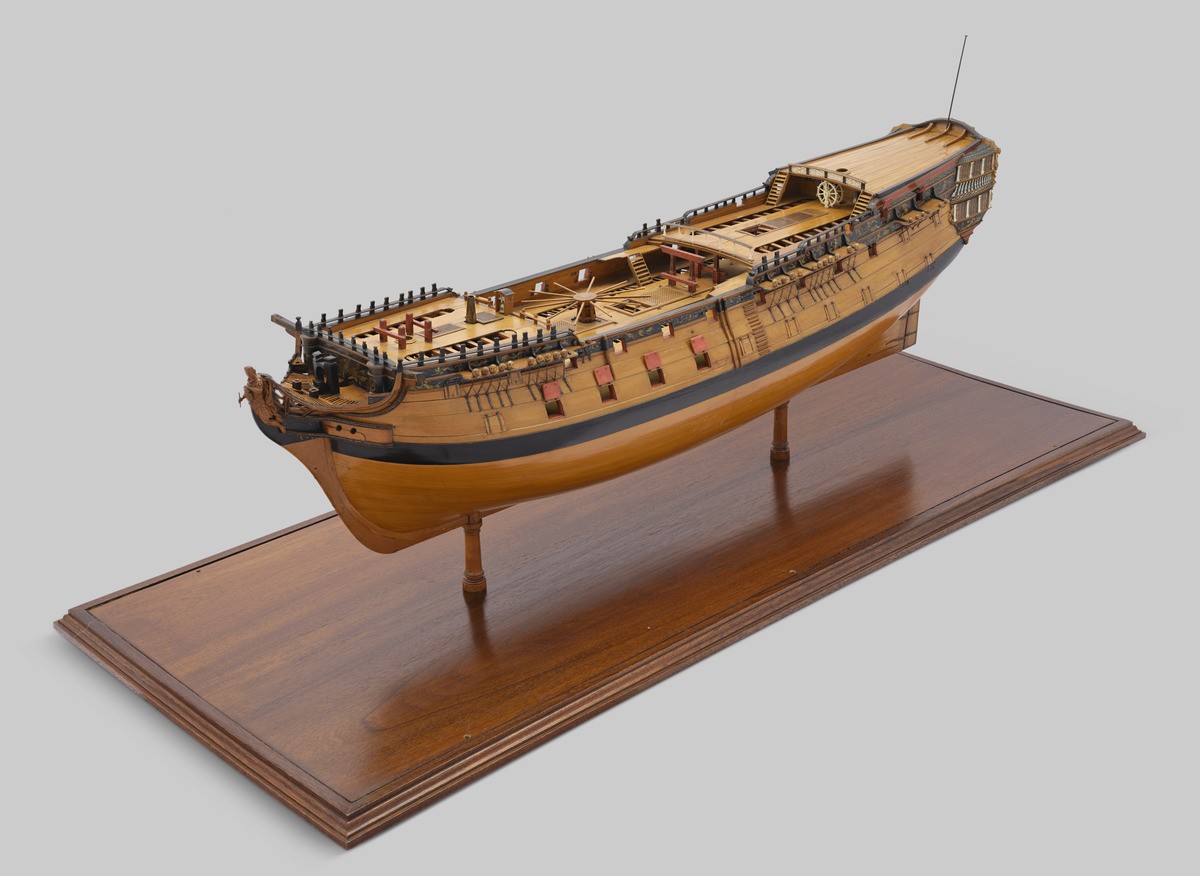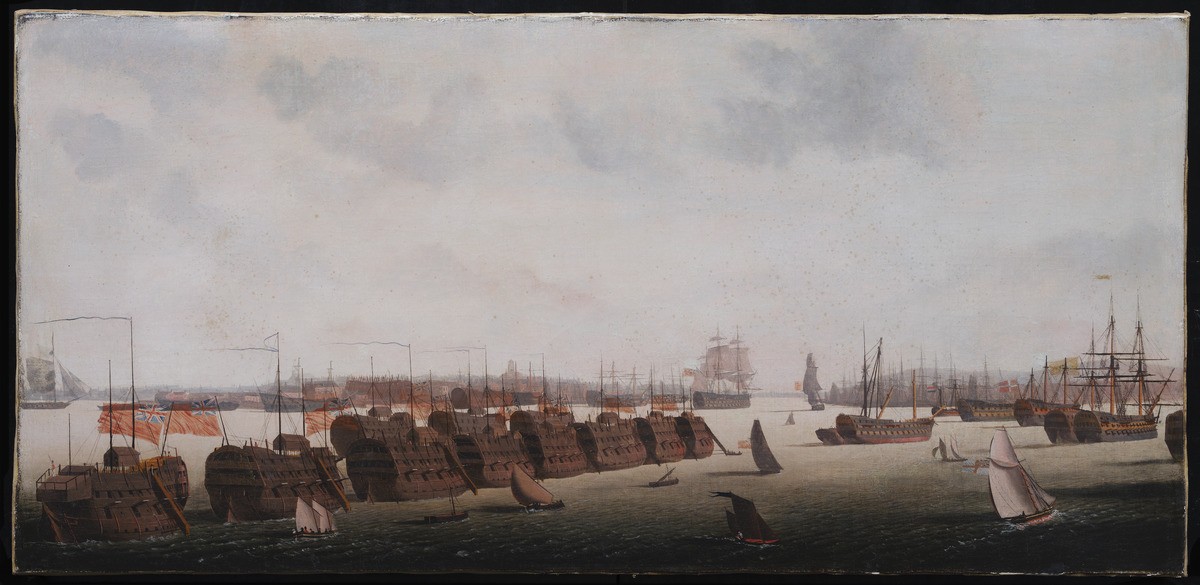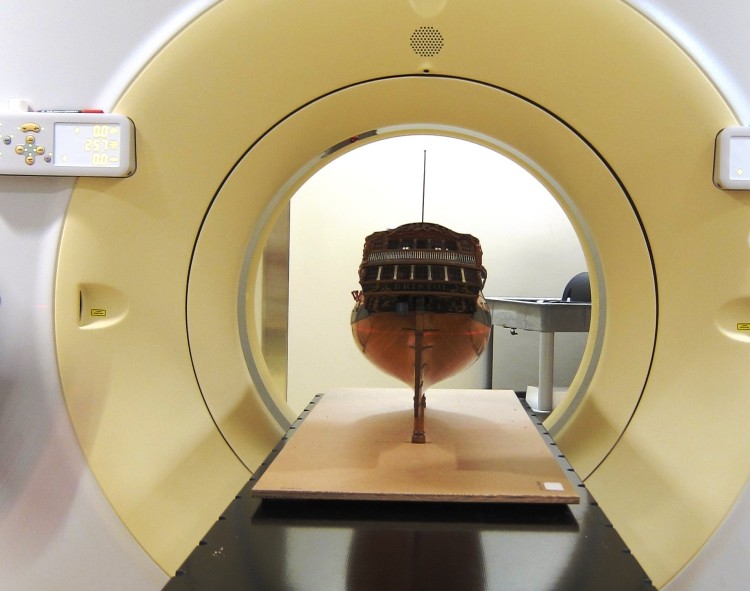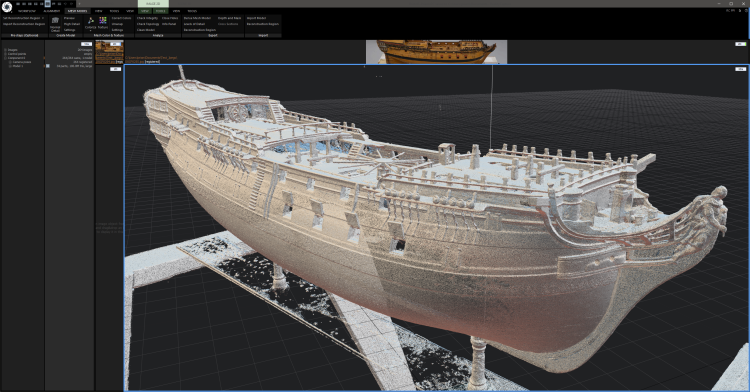Using the AGO’s research to build new virtual reality
The AGO is home to the Thomson Collection of Ship Models: over 130 examples of miniaturized ships spanning hundreds of years of maritime history
One of the most important models in the collection is George Stockwell’s (1729-1805) 1774 model of the Bristol. Designed in 1768 and completed in 1775, the Bristol was a 50-gun fourth-rate ship of the line built for the Royal Navy amidst England’s war to suppress the independence movement in its American colonies.
Building a Warship in the Late 1700s
Simon Stephens, Curator of Ship Model and Boat Collections, National Maritime Museum, Greenwich, London
The ship was built at Sheerness Dockyard in Kent, at the mouth of the river Medway, in the southeast of England. George Stockwell was a ship builder and modelmaker. In some rare instances, Stockwell signed his models. In 1992, Simon Stephens, Curator of Ship Model and Boat Collections, National Maritime Museum, Greenwich, London, England, discovered a note hidden inside the model of the Bristol, identifying Stockwell as the maker.
Ship Model Making
Thank you to Simon Stephens, Curator of Ship Model and Boat Collections, National Maritime Museum, Greenwich, London
The Life of the Bristol
In the 1760s and 1770s, the English Navy built new ships to fight across the Atlantic in the American Revolutionary War. The Bristol was commissioned in 1768, and construction ran from 1771 to 1775. The ship cost over £25,000 to build and outfit.
Sir Peter Parker captained the Bristol in 1776, when she served flagship for the naval attack on Sullivan’s Island, off Charleston, Carolina during the American Revolutionary War. The Bristol was heavily damaged in this first battle, an inauspicious start to its career.
History of Bristol from Warship to Prison Hulk
Simon Stephens, Curator of Ship Model and Boat Collections, National Maritime Museum, Greenwich, London
After South Carolina, the Bristol was sent to fight in battles in the Caribbean, including off Jamaica and Cuba. Following the American Revolution, the Bristol was deployed to fight in the Indian Ocean during the Anglo-French War of 1778-1783.
When the ship was no longer seaworthy, the Navy converted it into a ‘hulk’: they took off its masts and weapons and anchored the ship in place to use as a floating building. As a hulk, the Bristol served briefly as a hospital, and finally as a prison for French prisoners of war captured in the Napoleonic Wars (1799-1815). Finally, after all its potential use had been exhausted, the Bristol was broken up into scrap in 1810.
Life on Board a Prison Hulk
The Napoleonic Wars (1799-1815) fought between France and several European nations produced many prisoners of war. England turned to floating hulks to house French prisoners of war: they could no longer send prisoners to the American colonies (now no longer colonies) and they had recently retired several navy ships who had fought in the American Revolutionary War.
Life for prisoners aboard these floating hulks was miserable. Ambroise Louis Garneray (1783-1857) was a French sailor who was imprisoned by the British for from 1806-1814 on a hulk. After the Napoleonic Wars ended, Garneray returned to France and later in life, he published his memoirs. The Floating Prison (1851) serves as an important source for understanding the prisoner experience aboard these hulks. Garneray was a trained painter, and he improved his conditions on the hulk by exchanging his artworks with the prison guards and selling his art. Three paintings by Garneray hang at the AGO: each showing prison hulks floating along the sea, likely Garneray’s main view from his own hulk.
Studying the Bristol
Experts at the AGO have worked with historians, archivists, and scientists in England and Ontario to study the Bristol’s history and our model of the ship. The National Archives at Kew in and at the National Maritime Museum, Greenwich contain incredibly detailed accounts of the building of the ship. Our colleague Simon Stephens provided new and critical insights into George Stockwell’s work and life, especially the complex model of the Sheerness Dockyard where he worked, which is today housed at the National Maritime Museum’s collection at The Historic Dockyard, Chatham, Kent.
To understand our model, we studied the object with a number of imaging techniques. These included microscopy, X-rays, CT scans, and photogrammetry. When we partnered with Toronto virtual-reality designer Priam Givord, we used our CT scans and photogrammetry to re-assemble the Bristol in the digital world. These scans were the basis of the Bristol 1775: From Warship to Prison Hulk, that you can explore in Steam.
The Bristol VR Experience
The virtual reality experience of the Bristol, Bristol 1775: From Warship to Prison Hulk, allows users around the world to travel through time and space to explore life aboard the Bristol during its time as a prison hulk. The user can explore three decks of the Bristol: the Gun Deck, where prisoners sleep in hammocks, practice craft to make a livelihood, gamble, and spend their days. Above, on the Officer’s Deck, users can explore Garneray’s painting studio, and finally, at the Fo’c’sle, or Top Deck, is access to fresh air and views of the river to shore.
Bristol 1775: From Warship to Prison Hulk was made with cutting edge technologies, some only months old at the time of the VR experience’s release. These include Unreal Engine 5’s Nanite and Lumen tools. Nanite allows VR developers to bring real-world objects rendered with photogrammetry into the virtual realm at an unprecedented level of detail. Lumen in turn produces highly naturalistic lighting that shifts across spaces and reacts especially well with objects created using photogrammetry. These two technologies allowed developers to work with highly faithful recreations of the Bristol model to bring it alive online.
If you are not set up for VR, you can watch a preview of the experience here:
Exploring the Bristol as a prison hulk – Audio Experience
Listen to the rich, informative narration of the experience here:




